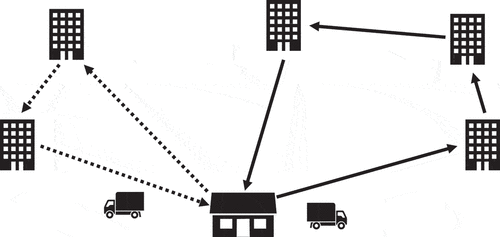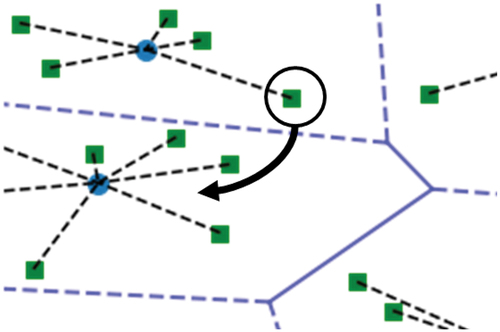Figures & data
Figure 1. CC-CVRP example (step 1): two vehicles starting from a warehouse serve five customers assigned to three clusters.

Figure 2. CC-CVRP example (step 2): the minimum cost routes of the vehicles assigned to clusters are determined by solving seperate TSPs.

Table 1. Nomenclature
Figure 3. CC-CVRP example (step 1): Customers are ordered by distance. In this way, customers that are assigned to another cluster are the most distant ones from the centroid.

Table 2. Performance evaluation for the class A instances of Augerat et al. (Citation1995) reported in http://vrp.galgos.inf.puc-rio.br
Table 3. Comparison of CC-CVRP solutions computed in up to 100 seconds and the FCM solutions of Shalaby, Mohammed, and Kassem (Citation2021) computed in up to 15 minutes
Table 4. Performance evaluation for the instances of class X for reported in http://vrp.galgos.inf.puc-rio.br
Table 5. Performance evaluation for the instances of class X for reported in http://vrp.galgos.inf.puc-rio.br
Table 6. Performance evaluation for the instances of Arnold, Gendreau, and Kenneth (Citation2019a) presented in http://vrp.galgos.inf.puc-rio.br

